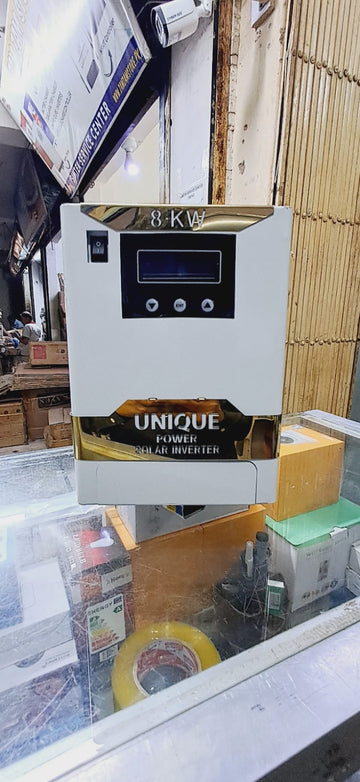
Unique Power - 8 kw - Direct Solar Inverter (without Battery without Wapda)
Features You'll Love
-
High-Quality Products
-
Fast Delivery
-
Trusted by Customers
-
24/7 Excellent Support
-
Estimated Delivery:Apr 05 - Apr 09

Unique Power - 8 kw - Direct Solar Inverter (without Battery without Wapda)
Solar Inverter without Battery without Wapda
Unique Power Solar Inverter
- 8kw Kw Off grid solar inverter without battery without wapda. Input voltage 250 - 400 VDC and output voltage fix 220AC max load capacity 3,000 WATT sinewave 50hz with High/Low Voltage protection Short Circuit Protection Temperature Protection 0.8 power factor
-
Off-grid solar inverter without battery: This means that the solar panels will directly power your appliances
-
Input Voltage: The inverter should accept input voltages ranging from 300 to 400 volts VDC, which is typical for solar panel outputs.
-
Output Voltage: The output voltage should be fixed at 220 volts AC, which is the standard voltage for household appliances in many regions.
-
Max Load Capacity: The inverter should be capable of handling loads up to 3,000 watts or 3 kilowatts.
-
Sine Wave 50Hz: The output waveform should be a pure sine wave with a frequency of 50 Hz, mimicking the waveform of utility power.
-
Protection Features:
- High/Low Voltage Protection: Protects the inverter and connected appliances from damage due to voltage fluctuations.
- Short Circuit Protection: Safeguards against short circuits, preventing damage to the inverter and connected devices.
- Temperature Protection: Prevents overheating of the inverter, which can degrade performance and potentially cause malfunctions.
-
Power Factor: The inverter should have a power factor of 0.8, which indicates efficient use of power.









